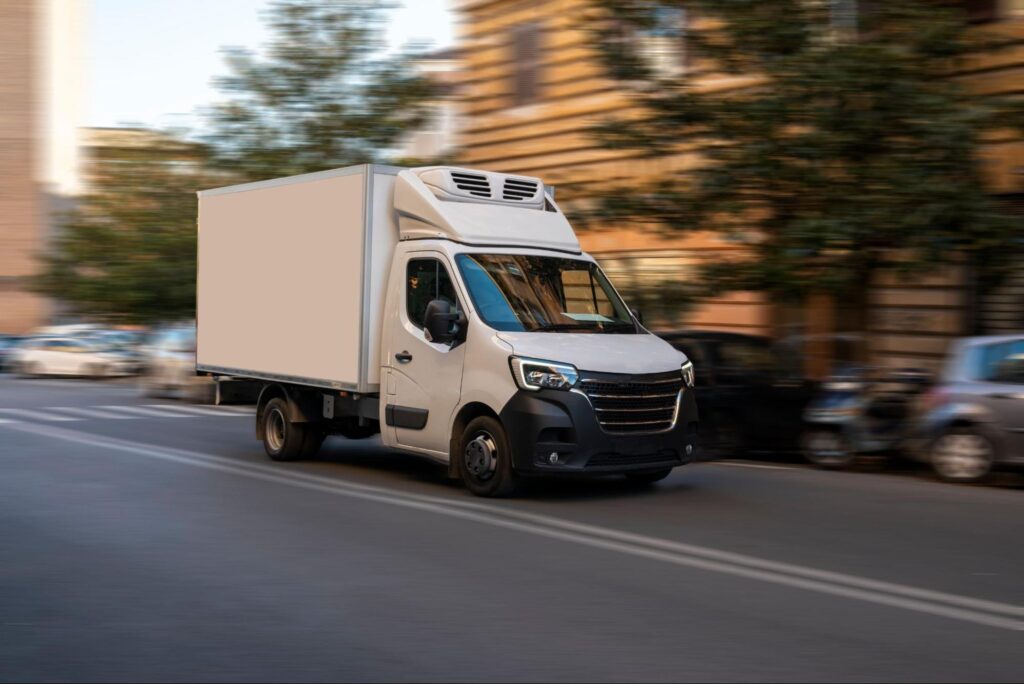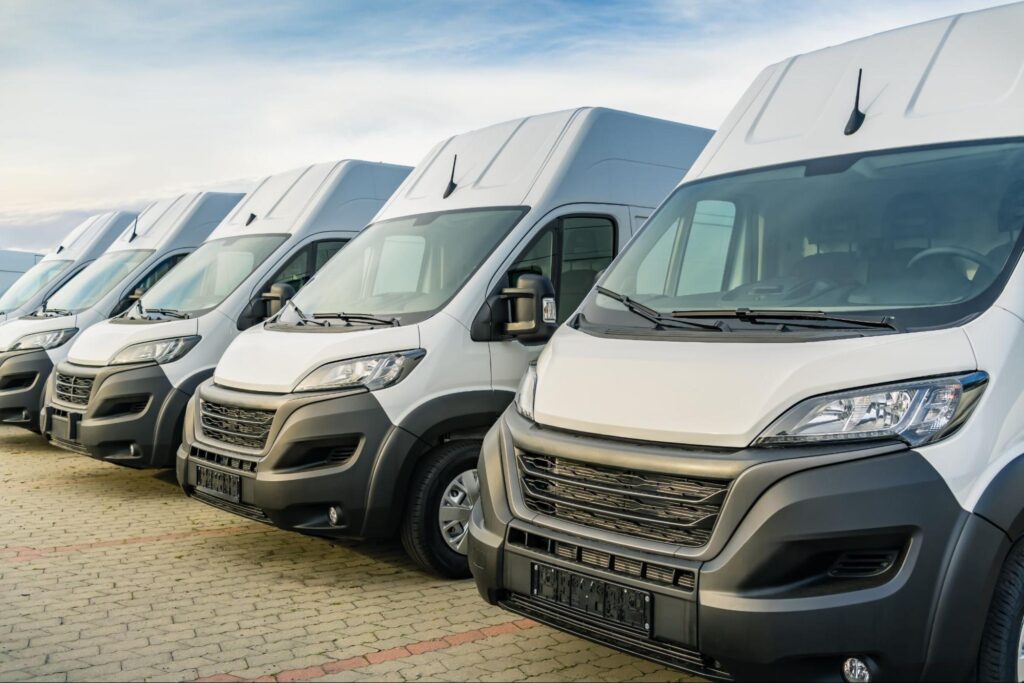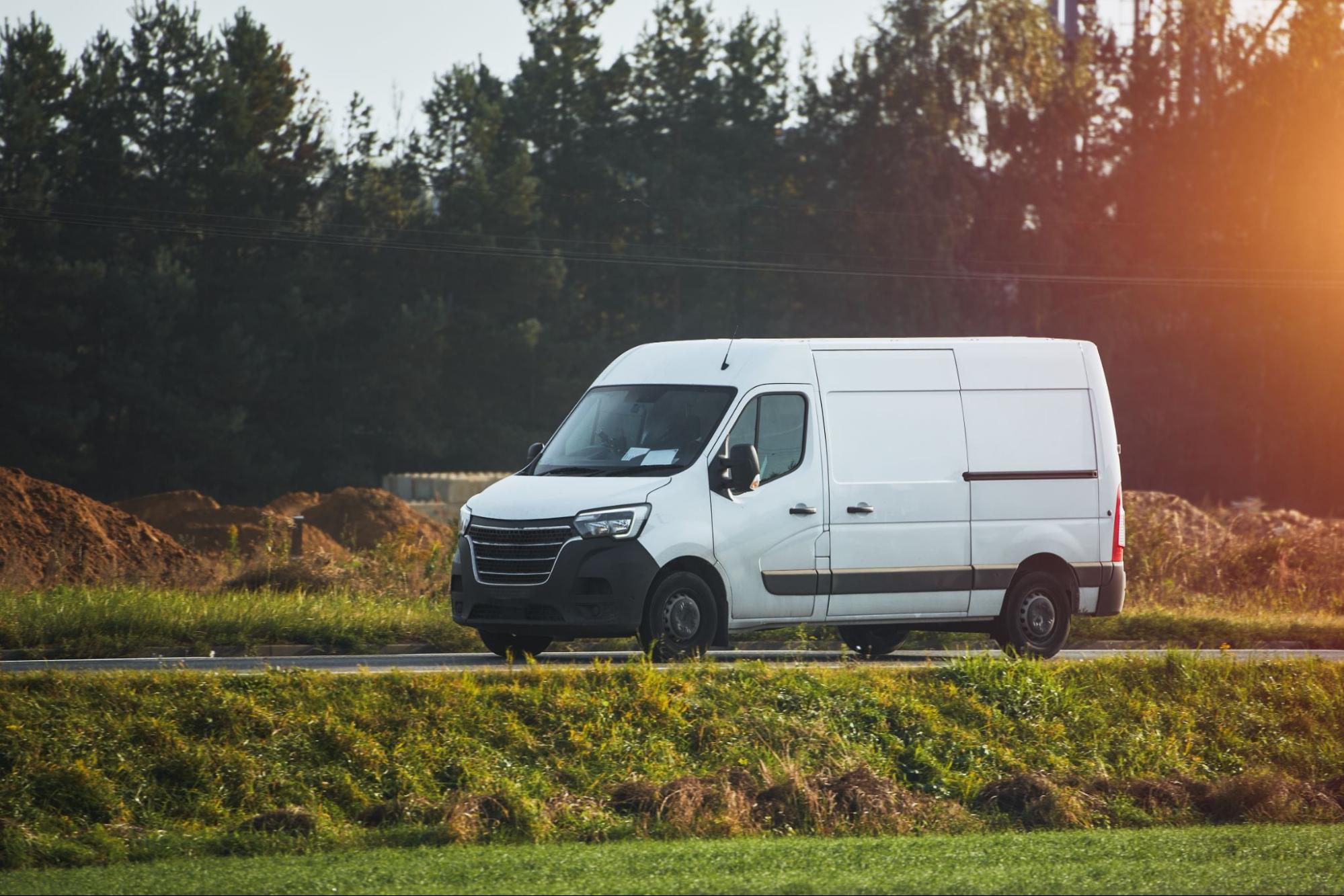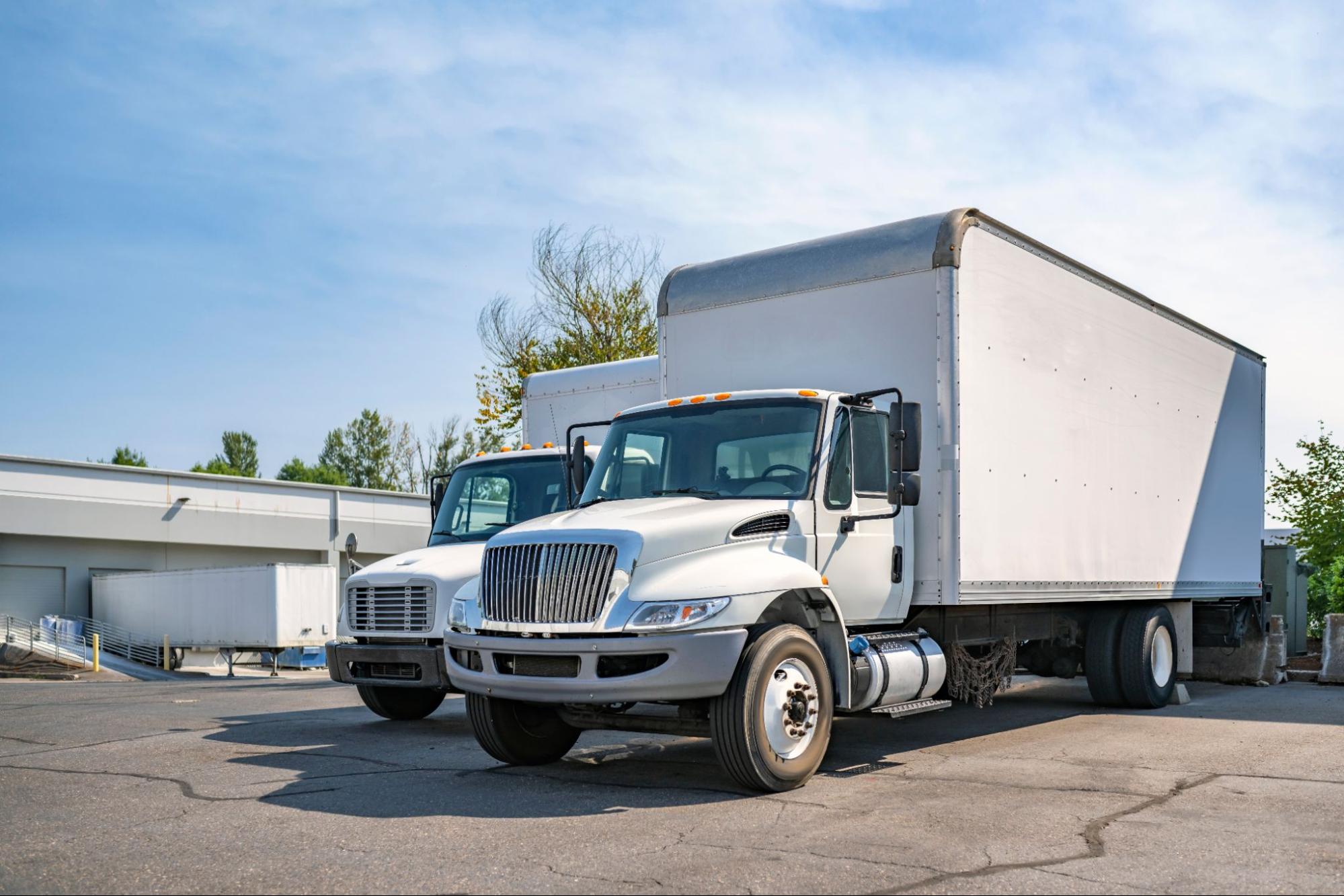Food and beverage logistics has reached a breaking point.
Cold chain delivery breakdowns destroy reputations, trigger regulatory action, and force costly product recalls.
Scheduling. Tracking. Compliance. Temperature management. Each of these elements must work flawlessly across massive networks. Companies that master these cold chain fundamentals will emerge as leaders. Those that don’t may disappear.
Key Takeaways
- Evaluate your current cold chain workflow: technology, people, process.
- Define 3-5 key KPIs (temp excursions, OTIF%, spoilage, exception resolution time, compliance audits).
- Map integration requirements for true end-to-end visibility.
- Establish a rapid-response plan for temperature and timing incidents.
- Ensure ongoing training and compliance drills for frontline teams.
Understanding Cold Chain Delivery Complexity in Food and Beverage Logistics

Cold chain delivery in food and beverage logistics is built on precision.
Unlike general freight, it requires constant temperature control, tighter timeframes, and higher regulatory scrutiny.
Every handoff, delay, or degree out of range puts product integrity and business margins at risk. Cold chain success demands a deeper level of visibility, coordination, and control.
What Makes Food and Beverage Logistics Unique?
Food and beverage logistics exists in its own universe. SKU diversity explodes across multiple strict temperature zones, shelf-life constraints shift by the hour, and regulatory updates arrive without warning.
Temperature management defines success.
While standard logistics focuses on location and timing, cold chain delivery requires precise, real-time thermal control on every mile, every stop, and every handoff.
One degree matters. A two-hour delay can compromise product integrity and destroy margins.
The Perishable Product Problem
Spoilage often creates risk.
Lawsuits, investigations, and costly recalls result from any temperature breach. Grocery Manufacturers Association data shows each recall averages $10 million in costs, as reported by FoodManufacturing.com.
A single lapse in cold chain protocols can trigger health hazards, regulatory action, and irreparable brand damage.
Multiple Stakeholders, One Chain
3PLs manage it all, automotive parts with strict delivery windows, perishable goods that need cold-chain routing, and clients with conflicting SLAs.
Multi-warehouse operations raise the stakes. Drivers switch zones, routes get complex, and demand spikes add pressure.
One bad routing decision, and you risk missing deadlines and losing trust.
Regulatory and Safety Pressures Driving Cold Chain Excellence
Food safety regulations grow more demanding with every update.
Regulatory bodies now expect complete transparency, immediate traceability, and reliable temperature monitoring at every stage.
Without these systems in place, even one shipment can put your compliance record and customer trust at risk.
Food Safety & Regulatory Environment
Food regulations keep tightening. FSMA requires end-to-end traceability. HACCP enforces temperature accuracy. EU mandates complicate cross-border shipments.
You need real-time temperature monitoring, instant alerts, and digital audit trails for every load.
If a shipment goes off spec, you catch it immediately. That keeps you compliant and protects your customers.
The Cost of Non-Compliance
Failed cold-chain compliance and food safety oversight carry steep financial and operational consequences:
- Research from Folio3 estimates that food recalls in the U.S. cost companies an average of $10 million per incident, with some cases costing more, depending on the scale of the recall
- In 2024, over 1,500 food products were pulled from shelves in the U.S. Labeling errors alone resulted in $1.92 billion in direct losses across logistics, waste, and recall management, based on reporting by New Food Magazine.
- Non-compliance can impose serious fines, border delays, or import refusals, especially under the U.S. FSVP and EU regulations.
You need to be audit-ready at all times. Digital logs, GPS data, and temperature records prove compliance and protect your shipments. Missing documentation puts everything at risk.
Customer Demands for Assurance
Food retailers and consumers expect full transparency. They want to know where shipments are, how they’re handled, and that conditions are safe.
Even a minor delivery issue can damage trust. Meeting these expectations means having real-time visibility, accurate records, and the ability to prove everything went right.
Key Cold Chain Delivery Challenges and Failure Points
Every stage of the cold chain presents an opportunity for error.
Whether it’s temperature drift, route delays, or handling missteps, failure points can appear without warning.
Solving these problems requires more than tracking; it takes real-time control, proactive planning, and systems built to handle variability.
Real-Time Temperature Control
You can’t control the weather, but you can control the temperature during transport.
- Track conditions across long hauls, cross-docks, and last-mile stops.
- Get alerts the moment temperatures drift out of range.
- Fix issues before they turn into violations or spoiled goods.
Monitoring tells you what went wrong. Real-time control helps you stop it from happening.
Timing and Route Variability
You work with tight delivery windows, but reality doesn’t follow a schedule.
City traffic causes delays. Rural routes stretch drive time. One load might carry frozen meat, fresh fruit, and dairy, each with its own clock.
That kind of complexity turns planning into a puzzle, and every stop adds another layer of risk.
Visibility Gaps
Visibility should follow the shipment, not stop at the next facility. But too often, data drops between systems. There’s no alert when temperature shifts, no insight when delays hit. You’re left reacting instead of preventing.
Without true end-to-end tracking, you’re flying blind at the worst possible moment.
Solve these gaps with delivery tracking software that follows your shipment at every stage.
Labor and Equipment Issues
You rely on people and machines working in sync. But training drivers and warehouse staff takes time, and turnover creates gaps.
Some resist change, others are still learning. Meanwhile, a missed reefer check or delayed calibration can trigger failures you won’t catch until it’s too late.
Cold chain compliance starts with consistency, on every shift.
Best Practices in Food and Beverage Cold Chain Logistics

Cold chain logistics works best when planning is proactive and precise.
The right tools allow teams to optimize routes, reduce exposure time, and align delivery windows with spoilage risk. By making smarter decisions earlier in the process, businesses gain more control and better outcomes across the board.
Proactive Route and Load Optimization
Smarter routing protects your product and your promise. With the right tools, you make better decisions before the truck even leaves.
- Use real-time weather to guide dispatch
- Match routes to customer windows and spoilage risk
- Shorten drive time to protect temperature control
- Reduce door-open time with optimized stop order
Every mile matters when the cargo is this sensitive.
Real-Time Data Monitoring and Response
IoT sensors provide continuous visibility into temperature and humidity across trucks, warehouses, and the last mile.
This level of monitoring is quickly becoming standard.
Research from Future Market Insights forecasts a 13.9% compound annual growth rate through 2033 for IoT-based cold chain monitoring, reflecting the industry’s shift toward real-time alerts and automated responses.
When conditions go off track, smart systems trigger playbooks in seconds, helping you act before a delay becomes a loss.
Documentation and Digital Compliance
You can’t afford gaps in your records.
Digital compliance tools capture temperature, custody, and time automatically. Blockchain protects the data. Cloud platforms provide fast access during audits.
Manual paperwork creates delays and increases the risk of errors.
When every shipment matters, having clear, accurate records is how you protect your operation
Load, Packaging, and Equipment Best Practices
Digital audit trails do the work for you, capturing temperature data, timestamps, and custody records without the risk of human error.
Blockchain keeps the data secure. Cloud access keeps you inspection-ready. When regulations tighten, you won’t scramble. You’ll already have the proof, neatly stored and ready to go.
Integrating Technology for Seamless Cold Chain Delivery

Cold chain technology is most powerful when it connects the entire operation.
Software platforms that unify routing, tracking, and exception alerts give you complete visibility. Mobile tools empower drivers to respond in real time.
Together, these systems create a delivery process that is faster, smarter, and far more resilient.
The Role of Cold Chain Delivery Software
Cold chain delivery software brings everything together. Route planning, temperature tracking, and exception alerts all live in one platform.
When your systems talk (WMS, TMS, and ERP), you get real-time coordination across the operation.
This eliminates manual handoffs, reduces errors, and gives you the control you need to protect every load.
Mobile Tools and Driver Enablement
Mobile apps give drivers everything they need in the field: real-time tracking, temperature logs, and delivery confirmation.
Training and updates are just a tap away. When drivers spot issues early and report them fast, small problems stay small. Empowered teams protect your cargo, your schedule, and your reputation.
Predictive Analytics and AI
Predictive analytics turns raw data into forward-looking decisions.
- Forecast demand spikes and delivery volumes using historical trends
- Identify temperature risk zones through heatmaps and geospatial analysis
- Detect early warning signs with machine learning models
- Improve routes, inventory, and dispatch timing using exception trend data
These tools support faster decisions and stronger cold chain performance.
Secure Data Sharing and APIs
Sharing data is part of the job, but how you share it matters.
APIs allow your systems to connect with partners, customers, and regulators in real time.
With proper security protocols in place, you protect sensitive information, meet transparency requirements, and create the trust that keeps supply chain relationships strong.
Sustainability and Efficiency in Cold Chain Logistics
Cold chain logistics must balance precision with responsibility.
Efficient routing and eco-conscious packaging help reduce waste and environmental impact. As sustainability expectations rise, these practices are central to both compliance and brand reputation.
Route Optimization for Environmental Impact
Every mile matters when you’re managing both margins and sustainability. Smarter routes use less fuel, reduce idle time, and keep your emissions in check.
By cutting food waste and lowering your carbon output, you meet environmental goals and keep your small fleet management eco-friendly, showing customers you care about more than just the bottom line.
Green Packaging and Materials
You need packaging that works for the cold chain and the environment.
Recyclable insulation and plant-based materials help maintain temperature control while reducing waste.
As regulations evolve and customer expectations rise, choosing the right packaging is no longer a secondary concern; it’s a key part of how your brand operates.
Emissions Reporting and ESG Compliance
You can’t meet ESG goals without tracking what matters. Emissions data from cold chain operations feeds directly into compliance reports, investor disclosures, and sustainability plans.
When you measure CO2 reductions and link them to your logistics performance, you turn environmental goals into tangible results that shape how partners and customers see you.
Business Impact: The Value of Getting Cold Chain Delivery Right
When cold chain delivery works as it should, the results reach every corner of the business.
Product loss goes down, compliance risk shrinks, and customer satisfaction rises. Better planning and smarter execution lead to real savings and stronger performance. With the right systems in place, these gains can be repeatable.
Bottom-Line ROI
Cold chain technology delivers measurable savings across the operation.
- Lower product loss from temperature excursions
- Fewer fines and chargebacks from missed compliance
- Reduced labor and re-delivery costs
- Less waste through smarter planning
Each improvement adds up. With the right tools, the return on investment shows up quickly and consistently.
Improved Customer Satisfaction and Retention
Reliable delivery keeps customers coming back.
Higher OTIF rates and fewer quality issues lead to stronger relationships with retailers and buyers.
Consistency builds confidence. When your operation performs every day, your customers depend on you, and that dependability becomes one of your biggest competitive strengths.
Competitive Differentiation
Cold chain reliability sets you apart in a crowded market.
Digital documentation, compliance readiness, and real-time visibility give retailers confidence in your operation. When you deliver with consistency, you earn shelf space, win contracts, and build leverage.
Operational strength becomes a selling point that drives growth and long-term advantage.
CIGO Tracker: Raising the Bar for Food and Beverage Logistics

Cold chain delivery demands precision, and CIGO Tracker is built to deliver it.
With real-time oversight across every stop, handoff, and storage point, your team stays one step ahead. CIGO Tracker turns complexity into clarity, helping you maintain control, meet standards, and protect every shipment that moves through your network.
End-to-End Visibility and Control
CIGO Tracker gives your team real-time visibility across every leg of the cold chain.
Live dashboards and digital records make it easy to monitor custody, temperature, and delivery status.
With full transparency and instant alerts, you respond faster, stay compliant, and give customers the confidence that everything is under control.
Advanced Route and Temperature Optimization
CIGO Tracker helps you stay ahead of disruptions.
Real-time rerouting adapts to changing temperatures, roadblocks, or delays instantly. With prescriptive analytics built in, dispatchers and field teams get the guidance they need to act fast.
Routing decisions prioritize both product safety and delivery efficiency on every route.
Seamless Integration
CIGO Tracker connects effortlessly with your existing tech stack. API integrations sync with leading WMS, TMS, and inventory platforms, keeping your data aligned across every system. Mobile access ensures drivers and warehouse teams stay informed.
When your tools work together, operations move faster and teams stay one step ahead.
What Could Your Operation Look Like with Full Cold Chain Control?
The most successful food and beverage logistics operations are leaning into smarter systems, not working around outdated ones. Visibility, traceability, and optimization are must-haves for growth and retention.
CIGO Tracker gives you complete cold chain delivery oversight in one platform.
If it’s time to move from manual fixes to scalable performance, our team is ready to show you how. Book your personalized demo today.
Frequently Asked Questions
1. How do I ensure cold chain visibility when using multiple carriers?
In food and beverage logistics, visibility depends on connected systems. CIGO Tracker links multiple carriers using standard handoffs, so your cold chain delivery stays traceable from start to finish.
2. Can cold chain delivery software help us with regulatory audits?
Yes. CIGO Tracker captures temperature, GPS, and custody data automatically. In food and beverage logistics, it provides the digital records you need to meet compliance requirements without extra paperwork.
3. What’s the ROI of investing in cold chain delivery technology?
Cold chain delivery software helps reduce waste, improve delivery accuracy, and strengthen customer relationships.
In food and beverage logistics, these improvements lead to more efficient operations and long-term savings.
4. How do we manage technology transition and training for drivers and warehouse staff?
CIGO Tracker is built for easy use. In food and beverage logistics, drivers and warehouse teams can get started quickly with simple mobile tools, guided training, and ongoing support.
5. What happens when temperature excursions occur during transit, and how quickly can we respond?
CIGO Tracker provides real-time alerts when temperatures drift outside acceptable ranges, enabling immediate corrective action. In food and beverage logistics, you can reroute shipments to closer facilities, dispatch emergency cooling units, or coordinate with carriers to address equipment issues before product integrity is compromised. Automated notifications ensure the right people are contacted instantly, while detailed excursion reports help you document incidents for insurance claims and identify patterns to prevent future occurrences.




